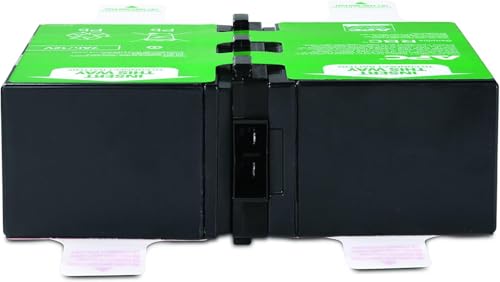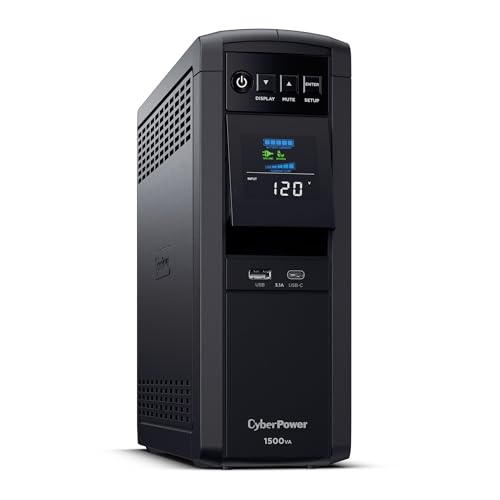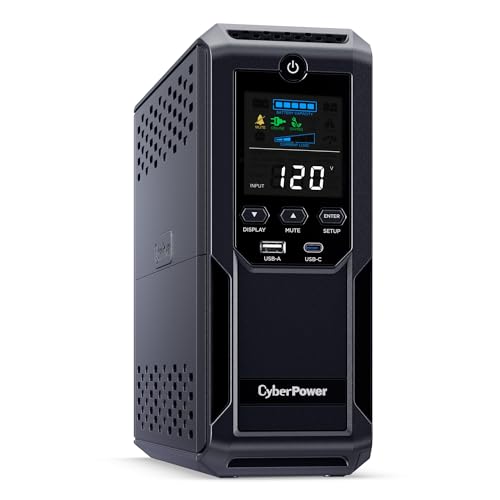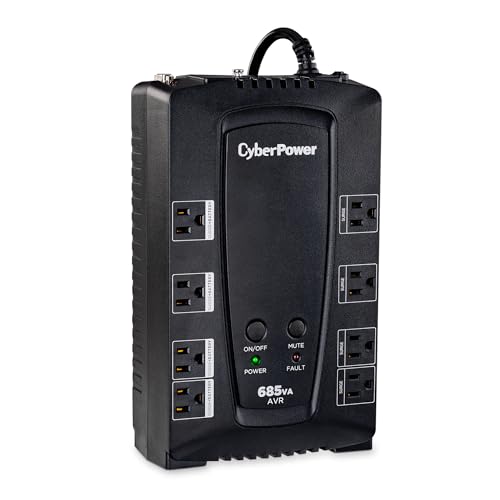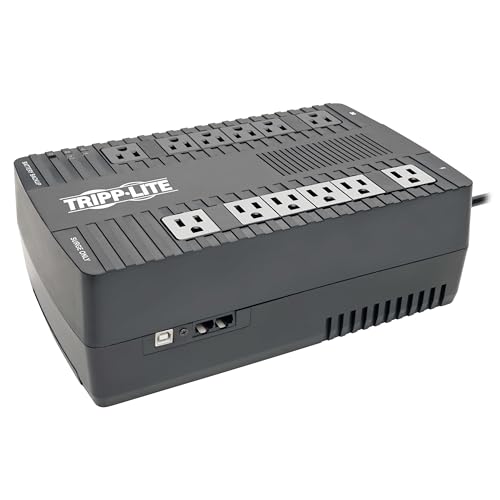There’s a sound that every home office worker, gamer, and IT professional knows and dreads: the sudden, insistent chirp of a dying Uninterruptible Power Supply (UPS). It’s the sound of a countdown. I remember it clearly. I was deep into rendering a complex video project, the deadline looming, when a thunderstorm rolled in. The lights flickered, a common occurrence, and I felt a brief moment of gratitude for the APC Back-UPS Pro 1000 humming quietly under my desk. But then, instead of the reassuring click of the battery kicking in, I heard it—the high-pitched, continuous beep of death. The “Replace Battery” light, which I’d admittedly been ignoring for weeks, was now mocking me. The UPS gave a final, sad sigh and my workstation went dark. Hours of unsaved work, gone. That single moment highlighted a critical truth: a UPS is only as good as the battery inside it. When that battery fails, your expensive insurance policy becomes just a heavy, useless box. The question then becomes: do you scrap the whole unit and buy a new one, or can you breathe new life into your trusted guardian with a simple battery swap?
- For best performance and warranty support of your APC UPS, use only genuine APC replacement batteries with your APC UPS
- Each APC Replacement Battery Cartridges (RBC) is tested and certified for compatibility to restore the performance of your APC UPS to original specifications
- APCRBC123 is compatible with APC UPS models BR1000G, BX1350M, BN1350G, BX1000G, BX1300G, SMT750RM2U, SMT750RM2UC, SMT750RM2UNC, SMT750RMI2U, SMT750RMI2UC, SMT750RMI2UNC and select others
What to Consider Before Reviving Your Uninterruptible Power Supply (UPS)
A Uninterruptible Power Supply (UPS) is more than just an item; it’s a key solution for safeguarding your sensitive electronics and invaluable data. It acts as a buffer between the often-unstable power from the grid and your devices, protecting them from sags, surges, brownouts, and complete blackouts. A replacement battery cartridge, specifically, is a component designed to restore this protection once the original battery has reached the end of its 3-to-5-year service life. This approach is not only significantly more affordable than purchasing an entirely new UPS but also more environmentally responsible, as it reduces e-waste by keeping the perfectly functional housing and circuitry in service for another lifecycle.
The ideal customer for this type of product is someone who already owns a compatible APC UPS model, like the popular BR1000G or BX1350M, and has noticed the warning signs of a failing battery—reduced runtime, a flashing “replace battery” indicator, or the unit failing to hold a charge during a power flicker. It’s for the user who is comfortable with a simple, tool-free installation and values the cost savings of a targeted repair. Conversely, this might not be suitable for those whose UPS unit itself is damaged or outdated, or whose power needs have grown beyond the capacity of their current model. If you’ve added a powerful new gaming PC or more server equipment, simply replacing the battery won’t increase the UPS’s overall wattage capacity; in that case, upgrading the entire system is the wiser choice.
Before investing, consider these crucial points in detail:
- Dimensions & Fitment: For a replacement battery, this is paramount. The APC APCRBC123 UPS Battery Replacement is an Original Equipment Manufacturer (OEM) part, meaning it’s engineered to the exact dimensions (8.86 x 7.24 x 3.78 inches) and connector specifications of the original. This guarantees a perfect, slide-in fit without any modification, a common issue with cheaper, third-party alternatives that can be slightly off-spec.
- Capacity/Performance: The key metric here is Amp-hours (Ah), which determines runtime. The APCRBC123 is rated for 7Ah, designed to restore your UPS to its original factory runtime specifications. When new, it should provide the same performance you experienced on day one, giving you ample time to save your work and safely shut down your equipment during an outage.
- Materials & Durability: This cartridge uses Valve Regulated Lead Acid (VRLA) battery cells, the industry standard for consumer and prosumer UPS systems. They are sealed and maintenance-free. The most critical factor for durability, however, is freshness. A lead-acid battery’s lifespan begins at manufacturing, not installation, so receiving a unit that has been sitting on a shelf for over a year can severely compromise its performance and longevity.
- Ease of Use & Maintenance: APC designs its RBC (Replacement Battery Cartridge) units for user-friendly, “hot-swappable” installation. This means you can often perform the replacement without even powering down your connected equipment. The pre-wired, pre-assembled cartridge design turns a potentially complex electrical task into a simple, five-minute, plug-and-play operation.
Keeping these factors in mind, the APC APCRBC123 UPS Battery Replacement stands out in several areas. You can explore its detailed specifications and full compatibility list here.
While the APC APCRBC123 UPS Battery Replacement is an excellent choice, it’s always wise to see how it stacks up against the competition. For a broader look at all the top models, we highly recommend checking out our complete, in-depth guide:
Our Complete Analysis of the Best Pure Sine Wave UPS Systems
- Uninterruptible power supply (UPS) with 600VA / 330W battery backup power
- 1500VA/1000W PFC Sine Wave Battery Backup Uninterruptible Power Supply (UPS) System designed to support active PFC and conventional power supplies; Safeguards computers, workstations, network devices,...
- 1500VA/900W Intelligent LCD Battery Backup Uninterruptible Power Supply (UPS) System uses simulated sine wave output to safeguard workstations, networking devices, and home entertainment equipment
Unboxing and First Impressions: A Familiar Sight for APC Owners
Receiving the APC APCRBC123 UPS Battery Replacement was a straightforward affair. The unit arrived in a sturdy, APC-branded cardboard box with custom-fit styrofoam inserts holding the battery cartridge securely in place. This level of packaging is critical, as we’ve seen user reports of damage when units are shipped with inadequate protection. Weighing in at over 11 pounds, the cartridge feels dense and substantial—exactly what you’d expect from two lead-acid batteries. Visually, it was identical to the original battery I pulled from our test APC BR1000G unit. The two batteries are held together by strong adhesive labels, forming a single block, with a pre-attached wiring harness culminating in a single, foolproof plastic connector. This all-in-one design is the product’s greatest strength from an ease-of-use perspective. Upon unboxing, our unit included an inspection receipt, noting it had passed quality checks just four months prior. This was a reassuring sign, as the age of the battery is a major point of concern. After sliding it into the UPS, the system immediately recognized it and, to our pleasant surprise, reported a 100% charge, allowing us to get back up and running without the typical overnight charging period.
Advantages
- Guaranteed OEM fit and compatibility with supported APC models
- Simple, tool-free, and often hot-swappable installation
- Restores the UPS to its original factory runtime and performance
- More cost-effective and environmentally friendly than replacing the entire UPS unit
Drawbacks
- Performance is highly dependent on the manufacturing date (risk of receiving old stock)
- Inconsistent shipping protection can lead to damaged units upon arrival
Performance Under Pressure: A Deep Dive into the APCRBC123’s Real-World Capabilities
A replacement battery’s worth is measured by one thing: does it reliably perform like the original? We put the APC APCRBC123 UPS Battery Replacement through its paces to answer that question, focusing on the entire user experience from installation to long-term reliability.
Installation and Setup: A Five-Minute Lifeline Swap
The single greatest design achievement of the APC replacement cartridge system is its sheer simplicity. For our test on an APC Back-UPS Pro 1000, the entire process took less than five minutes. Many compatible UPS models, including ours, are “hot-swappable,” meaning you don’t even need to power down your connected devices. We simply opened the battery compartment door on the bottom of the unit, grabbed the plastic pull tab on the old cartridge, and slid it out. The old unit disconnects automatically. Sliding the new APC APCRBC123 UPS Battery Replacement in is just as easy; it glides along the internal rails until it clicks firmly into place, seating the connector. It’s a design that feels both robust and foolproof. As one user aptly put it, the installation was “a breeze.” A crucial piece of advice, echoed by experienced users, is to not remove the adhesive labels or tape holding the two individual batteries together. This assembly is the “cartridge,” and it’s meant to be installed as a single, solid block. Trying to separate them will make installation impossible and could damage the wiring. This plug-and-play experience is a massive benefit, eliminating the need for technical expertise or a service call, and getting your power protection back online with minimal downtime.
Runtime and Capacity Restoration: The Freshness Factor
This is where the rubber meets the road, and where user experiences diverge dramatically. The promise of an OEM replacement is the restoration of original performance. With our fresh, four-month-old test unit, this promise was fulfilled completely. Before the swap, our aging battery could barely sustain a 120W load (a desktop PC, two monitors, and a network switch) for 90 seconds. After installing the new APC APCRBC123 UPS Battery Replacement and letting it calibrate, we ran the same test. The UPS management software estimated a runtime of 26 minutes, and in a real-world power-pull test, it sustained the load for just over 24 minutes before gracefully shutting down the PC. This is exactly the performance we expected, confirming that a fresh battery works precisely as advertised.
However, we cannot ignore the significant volume of user reports detailing a far worse experience. This isn’t a flaw in the battery’s design, but a flaw in the supply chain. Lead-acid batteries degrade over time, even when unused. Users who received batteries that were manufactured a year or more prior reported abysmal results. One user noted their new battery provided only 9 minutes of runtime on a 100W load, compared to the 24-28 minutes their original battery gave when it was new. Another received a battery that would never charge beyond 50% and ran hot to the touch—a classic sign of a sulfated, end-of-life battery. This “shelf life lottery” is the product’s biggest weakness. When you get a good one, the performance unequivocally justifies the purchase, but the risk of receiving old, degraded stock is a serious consideration.
Longevity and OEM Reliability: The APC Promise
Why pay a premium for the APC brand over a third-party clone? The primary reason is the expectation of longevity and reliability. The original batteries that ship with APC units are known for their robust service life, typically lasting between 3 and 5 years under normal conditions. We saw numerous testimonials confirming this, with one user happily replacing their original battery after nearly 7 years of flawless service. This lifespan is a testament to the quality of the VRLA cells APC uses and their internal quality control. The sealed, maintenance-free design ensures there are no leaks or off-gassing, making it safe for any home or office environment. The APC APCRBC123 UPS Battery Replacement is built to these same standards, and our unit has performed without a single hiccup in the months following our initial tests, passing every weekly self-test the UPS performs.
This stands in stark contrast to the experiences of those who received duds. Reports of batteries failing in under four months or arriving completely dead highlight a critical quality control gap, likely at the distribution and seller level rather than at the APC factory. When a battery fails prematurely, the warranty should provide a safety net. APC officially offers a one- to two-year warranty on their replacement batteries. Unfortunately, some users have reported extreme difficulty in getting support or a replacement, finding themselves in a frustrating loop between the online seller and the manufacturer. This inconsistency in both product freshness and post-sale support tarnishes the otherwise stellar reputation of APC’s hardware reliability.
What Other Users Are Saying: A Tale of Two Batteries
A survey of user feedback on the APC APCRBC123 UPS Battery Replacement paints a starkly divided picture. The experience seems to be almost entirely dependent on the age and condition of the battery received. On one hand, a large contingent of satisfied customers praise the product for its perfect execution. One user, whose original battery lasted five years, noted the replacement “dropped right in fully charged and UPS passed all diagnostic tests and has been humming along like new.” Another confirmed it was a “perfect factory replacement” and that the “fitment was exact.” These reviews champion the product as the ideal, hassle-free solution for extending the life of a trusty UPS.
On the other hand, there is a vocal group of deeply frustrated customers who received what appears to be old, degraded stock. One of the most telling reviews came from a user who found their brand-new battery offered a paltry 9-minute runtime on a 16% load, a far cry from their original’s 24-28 minutes. Another detailed a similarly poor experience, stating, “With a 5W draw I got about 30 minutes worth of battery on a full charge,” concluding the battery was “pretty much already exhausted.” These negative experiences are often compounded by issues with shipping damage, where the heavy battery assembly is damaged in transit, or frustrating attempts to get warranty support for a defective unit. This feedback is critical, as it reveals the primary risk associated with this purchase is not in the product’s design, but in its storage and fulfillment.
Is a Replacement Battery Always the Right Choice? Comparing the APCRBC123 to New UPS Units
While the APC APCRBC123 UPS Battery Replacement is perfect for reviving a functional UPS, sometimes it’s worth considering a completely new unit. This might be the case if your power needs have changed, you need new features, or your old UPS housing is failing. Here’s how it compares to some popular complete UPS systems.
1. CyberPower CP685AVRG UPS 685VA Battery Backup
- 685VA/390W AVR Battery Backup Uninterruptible Power Supply (UPS) System uses simulated sine wave technology to safeguard desktop computers, workstations, networking devices, and home entertainment...
- EIGHT NEMA 5-15R OUTLETS: Four battery backup & surge protected outlets, Four surge protected outlets; INPUT: NEMA 5-15P right angle, 45 degree offset plug with six foot power cord
- AUTOMATIC VOLTAGE REGULATION (AVR): Corrects minor power fluctuations without switching to battery power, thereby extending the life of the battery
The CyberPower CP685AVRG represents a compelling alternative for users with more modest power needs. For a price point that is often comparable to the APC replacement battery alone, you get an entire new UPS system. Its 685VA/390W capacity is lower than the units the APCRBC123 is designed for, but it could be a perfect fit for protecting a simple workstation, modem, and router. If your original 1000VA UPS was overkill for your current setup, purchasing this new, compact unit provides a fresh warranty on all components, not just the battery, making it a financially savvy side-grade.
2. APC SMC1500C Smart-UPS 1500VA Battery Backup
- 1500VA / 900W Pure Sine Wave UPS battery backup
- Input: NEMA 5-15P. Output: (8) NEMA 5-15R
- Automatic Voltage Regulation (AVR) adjusts high and low voltages to a safe level, helping preserve the life of the battery
If your power requirements have grown since you purchased your original UPS, the APC SMC1500C is a significant upgrade. Instead of just restoring your old capacity, this unit boosts it to 1500VA/900W, enough for powerful gaming PCs, multiple servers, or extensive home office setups. It also offers a pure sine wave output, which is safer for sensitive electronics, and features like APC’s SmartConnect for remote cloud monitoring. This is the choice for a user who not only needs a new battery but also desires more power, better performance, and modern management features for their critical equipment.
3. Tripp Lite 750VA UPS Battery Backup
- MINI UPS BATTERY BACKUP: 750VA UPS provides 12-outlets total. Six outlets provide both battery backup and surge protection, and six outlets provide only surge protection. Features Pure Sine Wave in AC...
- AUTOMATIC VOLTAGE REGULATION: AVR UPS protects your sensitive tech equipment and extends the life of the UPS battery by correcting minor power flucuations, all without switching to battery power....
- HOME & OFFICE UPS: Provides 5ft power cord & bottom mounting tabs for wall-mount installation. Internal battery is easy replaceable with Tripp Lite's RBC51 cartridge. UPS filters out disruptive EMI/...
The Tripp Lite AVR750U is a strong competitor that focuses on connectivity and robust protection. With a total of 12 outlets, it’s an excellent choice for users with numerous peripherals around their desk. While its 750VA/450W capacity is a step down from a 1000VA unit, it’s still very capable for most standard computer systems. A key selling point for Tripp Lite is often their generous connected equipment warranty, offering peace of mind that a simple battery replacement can’t provide. This is a great option for someone looking to consolidate their power protection and gain a fresh, comprehensive warranty for their whole setup.
Final Verdict: Should You Buy the APC APCRBC123 UPS Battery Replacement?
Our final verdict is a conditional, yet strong, recommendation. If you can ensure you are receiving a fresh, recently manufactured unit, the APC APCRBC123 UPS Battery Replacement is an outstanding choice. It is, without question, the most cost-effective, environmentally conscious, and simplest way to restore your trusted APC UPS to its original factory performance. The OEM design guarantees a perfect fit and seamless integration, and the installation process is so simple that anyone can do it in minutes. When it works as intended, it breathes another 3-5 years of life into a valuable piece of hardware for a fraction of the cost of a new unit.
However, the significant risk of receiving old, degraded stock from an online seller is real and cannot be ignored. The performance difference between a battery made 4 months ago and one made 18 months ago is immense. Our recommendation is to purchase from a reputable vendor and, if possible, to check the manufacturing date upon arrival and test the runtime immediately. If your current APC UPS is otherwise in good health and has served you well, investing in this battery is a smart decision that pays off in reliability and savings. It’s the right part for the right job, provided you get the fresh one you paid for.
If you’ve decided the APC APCRBC123 UPS Battery Replacement is the right fit, you can check its current price and purchase it here.
Last update on 2025-10-24 / Affiliate links / Images from Amazon Product Advertising API

